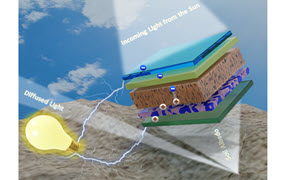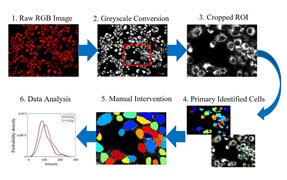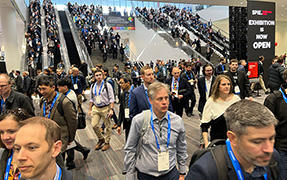3D printing is ready to grow up, says panel
An industry panel at SPIE Photonics West 2018 discusses the future of additive manufacturing
As an industry, 3D printing and, more broadly, additive manufacturing is at an awkward stage. "We're in puberty," said Peter Leibinger, CTO of Trumpf, at a panel discussion about 3D printing and "Industry 4.0" on Wednesday. While the future of additive manufacturing shows promise, the panelists said, many challenges remain.
When 3D printing was invented in the 1980s, the main application was to build prototypes. "It's largely because the process wasn't robust enough," said Jason Jones, CEO and co-founder of Hybrid Manufacturing Technologies. 3D-printed objects were fine for ensuring something had the right size and shape, but the quality wasn't good enough for a final product. But things are starting to change. "What you're seeing now is a transition from prototyping to production," he said.
In the aerospace industry, for example, improvements in jet engines have been incremental, with advances in individual materials and parts. But additive manufacturing is accelerating that prog- ress, potentially leading to radical new technology, said Andy Martin, technology development leader of GE Additive. "As users explore the technology and the opportunity to make unusual creations and machines, we'll see what was previously inconceivable being invented," Martin said.
Leibinger was more circumspect, urging a tempering of expectations. "It will change manufacturing, but it will take longer than many claim," he said. "It will not disrupt manufacturing, in my mind, but it will be a complementing process that will enrich manufacturing."
Trumpf's Peter Leibinger (left) and Jason Jones from Hybrid Manufacturing Technologies at the 3D printing panel session on Wednesday morning.
Indeed, the road won't be easy. For one, the traditional design mindset must shift. Engineers have been conditioned to think not additively, but subtractively, in which you design a part by drilling or cutting from a chunk of material. "To change this mindset is quite tough," said Karsten Heuser, the head of additive manufacturing at Siemens AG.
Another challenge arises from the fact that additive manufacturing isn't a single technology. It's an umbrella term referring to dozens of technologies and applications that encompass categories ranging from material extrusion to sheet lamination, Jones explained.
Such a range means even communication can be difficult. When discussing the specifications of a certain part, for example, it can take a while before customers and companies figure out how to understand each other, Leibinger said.
According to Heuser, the key to progress is co-innovation. Every segment of additive manufacturing, from the lasers to the software, depends on one anoth er. Innovation must come from experts across all areas.
Some of that innovation will need to include digitization, and the incorporation of sensors and software that monitor the manufacturing process in real-time. High geometric accuracy is still beyond current capabilities, Leibinger said. "You cannot print accurate parts today." But constant monitoring could help companies improve and ensure the quality of the product.
Better yet, future approaches may incorporate artificial intelligence - which, Heuser said, would be a boon for the industry. Equipped with artificial intelligence, a machine could conceivably learn, on its own, how to improve its manufacturing process.
But for now, additive manufacturing is just starting to mature. "Most of the things that are 3D printed now are far lower [quality] in terms of what we're capable of," Jones said. "There's a lot of space for improvement."
Marcus Woo is a freelance science journalist based in California. A version of this article appeared in the Photonics West Show Daily in February.
Related SPIE content:
3D printing of ophthalmic lenses
Materials for creating 3D printed space sensors and systems
Rapid, high-precision 3D printing on the nanometer to centimeter scale
High-resolution 3D printing for drug delivery
3D printing for custom design and manufacture of microtonal flutes
New horizons open with space-based 3D printing
Chuck Hull: Pioneer in Stereolithography
Doug Neckers: Pioneer in Stereolithography
| Enjoy this article? Get similar news in your inbox |
|



